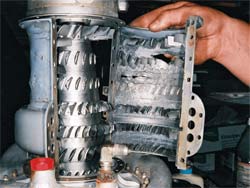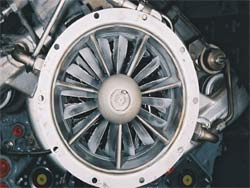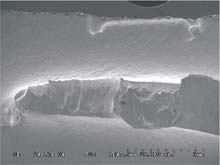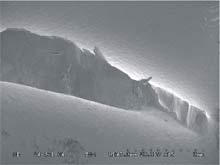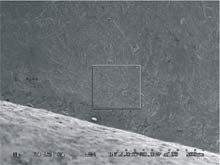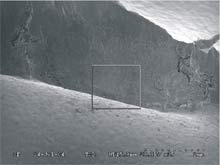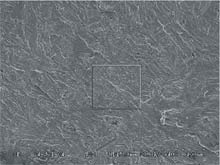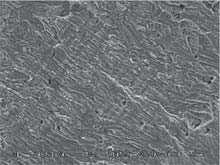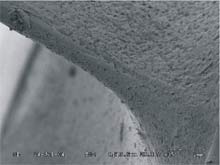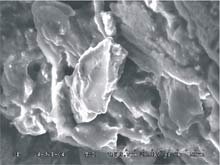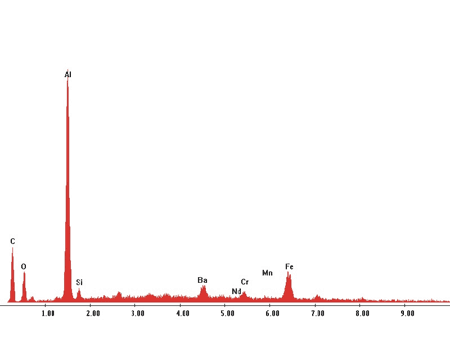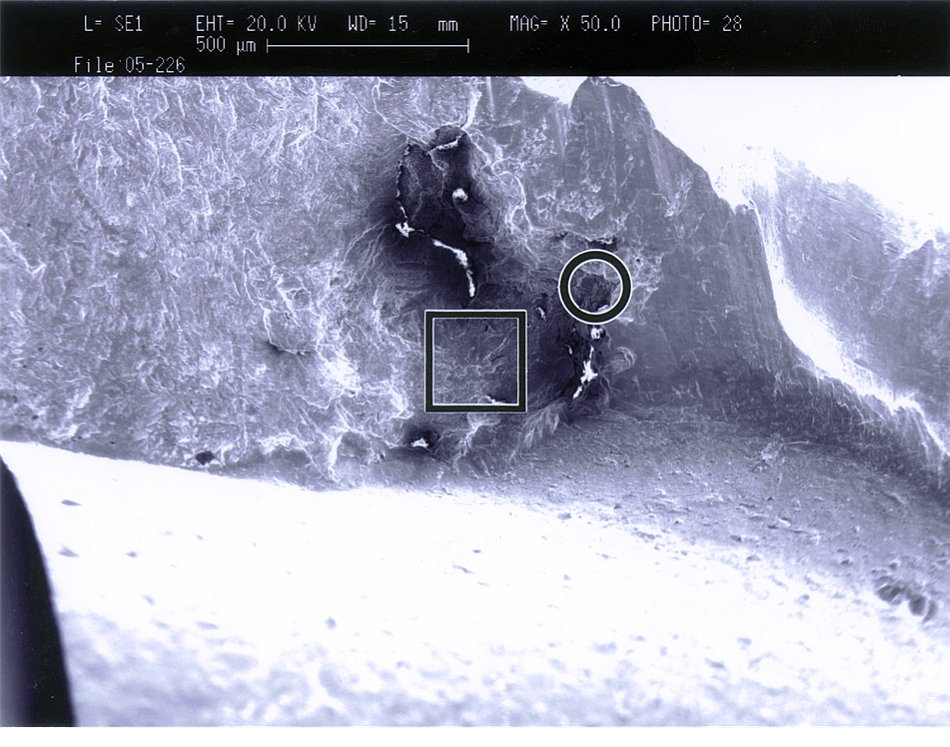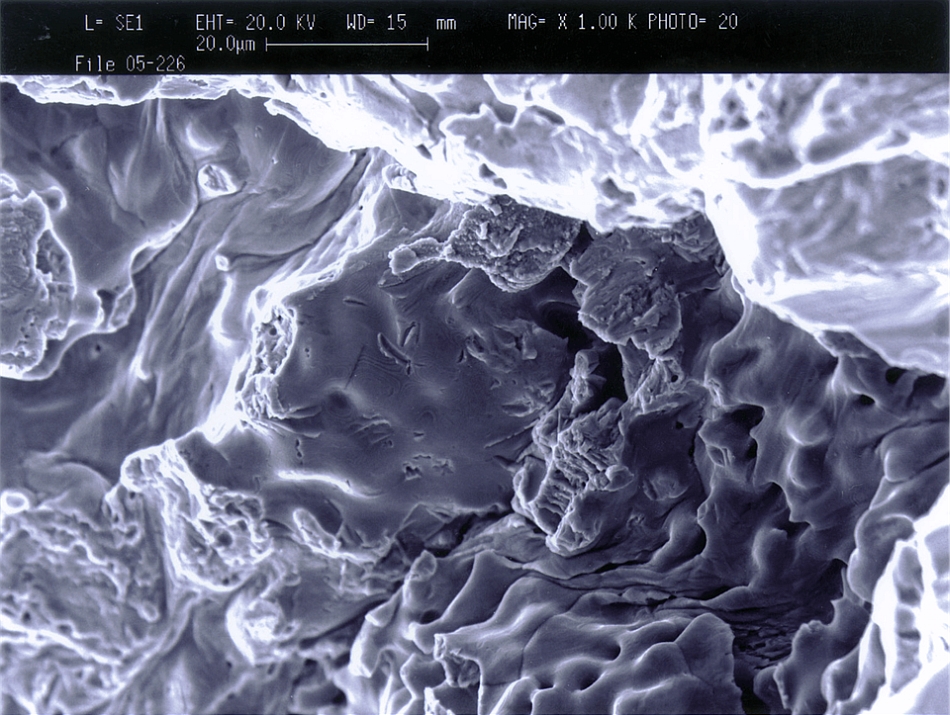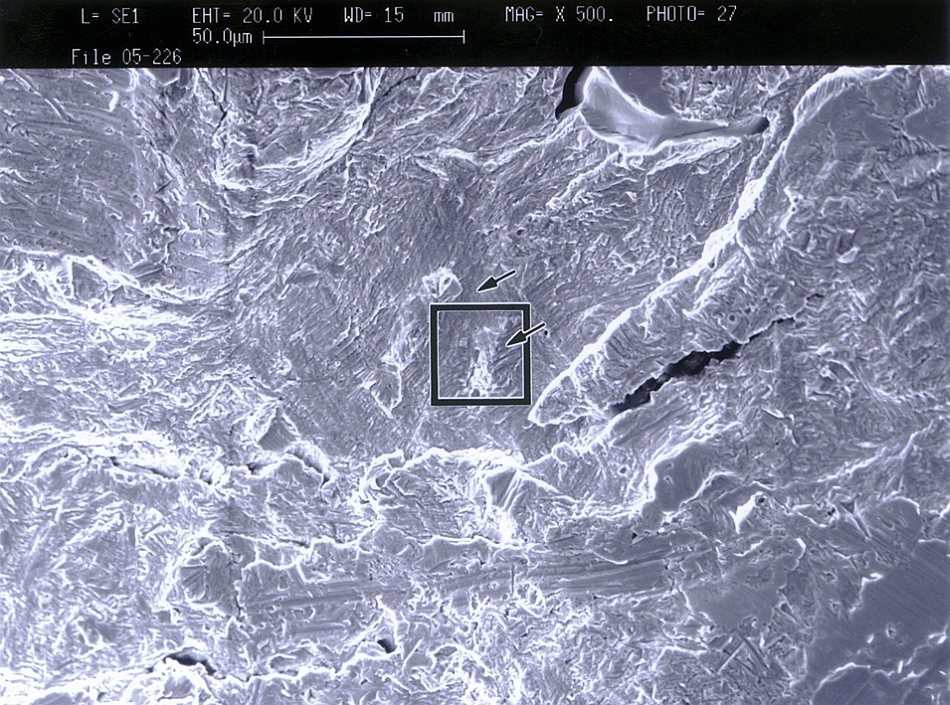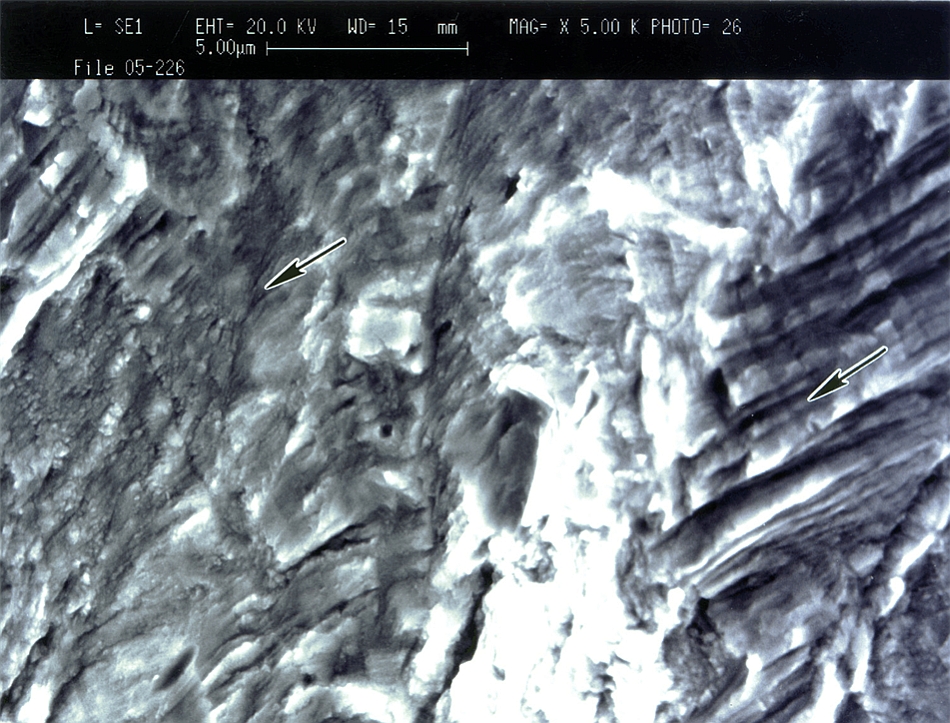Engine Power Loss
Quantum Helicopters Ltd.
MD Helicopter (Hughes) 369D C-GWPQ
Bob Quinn Airstrip, British Columbia
The Transportation Safety Board of Canada (TSB) investigated this occurrence for the purpose of advancing transportation safety. It is not the function of the Board to assign fault or determine civil or criminal liability. This report is not created for use in the context of legal, disciplinary or other proceedings. See Ownership and use of content. Masculine pronouns and position titles may be used to signify all genders to comply with the Canadian Transportation Accident Investigation and Safety Board Act (S.C. 1989, c. 3).
Summary
On 11 June 2004, the MD Helicopter (Hughes) 369D (registration C-GWPQ, serial number 700755) was lifting a 900-pound sling load when there was a loud bang accompanied by a partial engine power loss. The pilot performed a forced landing, and the aircraft hit the ground and rolled onto its right side with the main rotor blades still turning. The engine continued to operate on the ground and was shut down by the pilot. There was no post-impact fire. The pilot experienced accident-related health issues some time after the occurrence.
Factual information
The helicopter was equipped with a modular-type engine, Rolls Royce Allison 250-C20B (S/N CAE-836346). The compressor assembly S/N:CAC-35032 had accumulated 7808.1 hours total time since new (TTSN) and 866.5 hours time since overhaul (TSO). It had been installed on this airframe for 90.5 hours. It was previously installed on a Bell 206B helicopter and operated with a bleed air centrifugal particle separator. The accident helicopter was fitted with a FDC/aerofilter particle separator. There was unremarkable damage discovered on a compressor, first-stage, rotor-blade leading edge during the latest engine installation. However, the damage was considered acceptable by the aircraft maintenance engineer (AME).
The engine was recovered by Quantum Helicopters Ltd. and shipped to a local repair and overhaul facility for teardown and examination under the control of the TSB investigator. The teardown inspection revealed that the compressor (P/N 6890550, S/N 35032) had shed all the 2nd and 3rd stage rotor blades, most of which had departed through the case halves and were recovered in the engine compartment, along with other debris.The failed compressor and related components were forwarded to the TSB Engineering Laboratory for further examination and failure analysis (see Appendix A for the list of components). The primary components of interest were the compressor case halves and the compressor rotor shown in Photo 1. Photo 2 shows the compressor inlet, which was examined for possible foreign object damage.
Compressor Case Halves
Examination of the compressor case halves showed burst-type tear damage in the skins of both halves, adjacent to the 2nd stage and 3rd stage rotor paths. Penetration through the skin was from the inside in all instances. The most significant tear was a large hole through the skin of one of the case halves in the 2nd stage rotor path, approximately 70 mm long by 13 mm at its widest opening. It was concluded that most or all of the 2nd stage rotor blades exited the compressor at this location.
The 1st, 4th, 5th, and 6th stage compressor vanes were intact, but showed impact damage on both the leading and trailing edges of the vanes. The damage observed was consistent with the failure debris passing through the compressor while it continued running for a short period following the failure. Five of the 2nd stage stator vanes had fractured at or near the root. The vane stubs were bent over in the direction of rotation, and a sixth vane had completely pulled out of its slot in the vane band. All of the vanes from the 3rd stage stator had also fractured at or near the root with the vane stubs bent over in the direction of rotation. Optical microscopic examination of the vane fractures revealed predominantly impact and rub damage in the direction of compressor rotation, which had obliterated most of the original fracture surface details. However, the vane fracture profiles and damage patterns were consistent with overload failures and secondary damage. The leading and trailing edges of the vanes in all stages were also examined for erosion; no measurable erosion was observed.
A 3rd stage stator vane row band was removed from one of the case halves to examine the condition of the brazed joint from the back of the vane band. All joints showed the washers intact and good braze penetration in the joint. The slot in the 2nd stage stator vane row, where the vane had pulled out, likewise showed complete braze material penetration in the joint. Cross sections through the vanes on either side of the vane pull out location were mounted to examine their joint condition. There were some minor porosities observed, but, in general, the joints were good with complete penetration of the braze material and well-developed fillet radii between the vanes and the vane band.
Compressor Rotor
The leading edges of the compressor front support vanes and 1st stage rotor blades were examined in detail for any indication of foreign object damage (FOD). On the leading edge of the front support vane, located at about the one o'clock position, there were two small indentations (Photo 2). The original surface of the vane at each mark was still visible with some oxidation and was not disturbed by any material smearing, indicating that the marks had been present for quite some time. The leading edges of the 1st stage rotor blades showed some tip damage on a few blades, and a relatively minor impact mark near the root of one blade that warranted a more detailed examination.
Optical examination of the impact mark showed that the leading-edge material of the blade had been disturbed by contact with a small piece of foreign material or debris, and there appeared to be a small particle of material trapped within the indentation. The indentation was examined at higher magnifications in the scanning electron microscope (SEM). Elemental analysis confirmed the presence of a small aluminum-rich particle that was foreign to the surrounding material of the blade (Appendix C, photos 9 and 10). The material debris that had been collected from the engine cowl area during recovery and the compressor rotor blade pieces were examined, and four pieces of what appeared to be broken rivets were identified. An analysis for material composition showed material spectra containing a predominant nickel peak for sample number 1, predominant titanium and cadmium peaks for sample number 2, and predominant iron and chromium peaks for sample number 3. Sample number 4 was almost wholly aluminum with small amounts of magnesium, which is consistent with a standard aluminum rivet material.
All of the blades from the 2nd and 3rd stage rotors had failed at or near the root. All the 4th stage rotor blades showed severe impact damage and tip rub, and were bent opposite to the direction of rotation. Three of these blades had fractured at or slightly below 1/3 span and two blades had fractured at mid-span. The 5th and 6th stage rotor blades showed secondary impact marks, predominantly along the leading edges, with blade damage progressively diminishing rearward.
Optical microscopic examination of the 4th stage rotor blade fractures revealed overload features consistent with secondary damage. However, one of the three 4th stage rotor blades that failed closer to the blade root did show what appeared to be macroscopic features of cyclic overload fracture. This blade fracture was sectioned from the rotor for SEM examination at higher magnifications. Examination revealed only overload fracture features and surface rub patterns, but gave the false appearance of cyclic steps when viewed at lower magnifications.
Optical microscopic examination of the blade fractures from the 2nd and 3rd stage rotors predominantly revealed overload features. All of the blades had failed at or slightly above the blade root and the blade stub remnants were bent opposite to the direction of rotation. However, one blade fracture in the 2nd stage was unique in that it showed a flat, transverse fracture surface from the leading edge back towards mid-spa that changed to a slanted fracture towards the trailing edge. Areas of the fracture surface towards the leading edge showed faint striations indicating a progressive failure mode. This blade fracture was sectioned from the rotor for detailed SEM examination.
A SEM examination of the 2nd stage rotor blade, showing faint striations, confirmed the presence of distinctive fatigue striations beginning near the leading edge of the blade and progressing aft towards approximately mid-span (see Appendix B, photos 3 through 8). The aft section of the blade fracture towards the trailing edge was characteristic of the final overload failure of the blade. All fracture detail in the leading edge region where fatigue initiated had been completely obliterated by post-fracture rub damage.
A cross-section was taken through the fracture just aft of the leading edge for metallurgical examination of the blade near the region of fatigue initiation. No metallurgical anomalies were observed or any other defects that could identify the cause of fatigue initiation. Metallographic assessment of this section showed a uniform grain structure typical of precipitation-hardened stainless steel 17-4 PH. Elemental composition of the compressor rotor blade material was verified by energy dispersive x-ray analysis as a 17-4 PH stainless steel alloy, the material specified for the compressor rotor. The hardness was also uniform and averaged 34.5 HRC, which satisfied the manufacturer's material hardness criteria of 30-38 HRC.
Analysis
High cycle fatigue fracture was confirmed for one of the 2nd stage rotor blades, and separation of this blade is considered to be the lead event in the compressor failure. This is consistent with the damage pattern observed in the compressor, including the shedding of all of the 2nd and 3rd stage rotor blades, and the major penetration observed in the case halves in the 2nd stage rotor path. Failure analysis of the stator vanes did not reveal any indications of premature failure, and the vane failures were all considered to be secondary in nature, resulting from the initial 2nd stage rotor blade failure. This was supported by a review of several other compressor failures for this engine type, which showed that in all cases where a compressor stator vane failure was identified as an initial cause of failure, there was no associated shedding of the compressor rotor blades such as occurred in this incident.
The possibility of FOD as a precursor to the compressor rotor blade failure was considered. But, for a number of reasons, it could not be concluded positively that FOD was a precursor. On this installation, a particle separator was installed; however, there appears to have been impingement by a small foreign particle on one of the 1st stage rotor blades, as evidenced by what appeared to be a recent impact mark and a particle of aluminum metal transfer. The engine had continued to run for a short time after ground impact, and it is possible that something was ingested into the compressor at that time, leaving the mark observed on the 1st stage blade. On the other hand, the mark on the leading edge of the front support vane was oxidized, indicating that it had been present for some time. Since the debris in which the piece of aluminum rivet was found was collected among general debris found in the engine cowl area after the accident, it cannot be positively linked to the presence of the small particle of aluminum in the impact mark. Given these observations, FOD cannot be ruled out. However, the absence of any fractographic evidence near the fatigue initiation zone makes its influence as a probable fatigue crack initiator in the 2nd stage rotor blade inconclusive.
The following TSB Engineering Laboratory Report was completed:
- LP 082/2004 – Compressor Failure
This report is available from the Transportation Safety Board of Canada upon request.
Findings
Finding as to Causes and Contributing Factors
- The compressor failure resulted from the separation of a 2nd stage rotor blade due to high cycle fatigue, which had initiated at or near the leading edge of the blade. Post-fracture mechanical damage in the origin area prevented determination of the cause of fatigue initiation.
Other Finding
- Indications of foreign object damage (FOD) were observed, but the significance of FOD as a precursor to the 2nd stage compressor rotor blade fracture initiation was inconclusive.
This report concludes the Transportation Safety Board's investigation into this occurrence. Consequently, the Board authorized the release of this report on .
Appendices
Appendix A - Compressor Components Forwarded for Analysis
Rolls Royce Allison 250-C20B
Engine S/N CAE-836346
| Component | Part Number | Serial Number |
|---|---|---|
| Scroll | 6851574F | AP18581 |
| Front Support | 6890530-B | 22977 |
| Rear Support | 6851430 | ER22658 |
| Case Half Set | 23057142 | 26792 |
| Front Diffuser | 6870811 | ER-29772 |
| Vane Diffuser | 6870813 | |
| Spur Adapter Gearshaft | 23031922-C | CG124630 |
| Bearing Housing | 6893617-C260 | 17 |
| Miscellaneous bolts and nuts | N/A | N/A |
| #1 Bearing | 6898607 | HAZ101 |
| #2 Bearing | 6889093 | HAQ799 |
| Carbon Seal Mating Ring | 23034513B | 63005SOCN |
| Compressor Rotor 1st Stage | 6890501 | KR69611 |
| Compressor Rotor 2nd and 3rd Stage | 23060422 | C36140 |
| Compressor Rotor 4th Stage | 23060404 | C34556 |
| Compressor Rotor 5th Stage | 23060405 | ER41944 |
| Compressor Rotor 6th Stage | 23060406 | ER41335 |
| Impeller | 3058147-C | KR99876 |
| Rotor Blade pieces and debris | N/A | N/A |
Appendix B - Photos 3 to 8 Showing 2nd Stage Compressor Rotor Blade Fatigue Failure
Appendix C - Analysis of Particle on 1st Stage Rotor Blade
Photos 9 and 10 are SEM images of impact mark at 1st stage rotor bladeleading edge showing the presence of a small imbedded particle.
Appendix D - Re-examination of 2 ne Stage Rotor
Photos 11 through 14 are scanning electron microscope images of the damaged area near the leading edge of the 2nd stage rotor blade showing evidence of porosity and direction of fatigue crack propagation.
